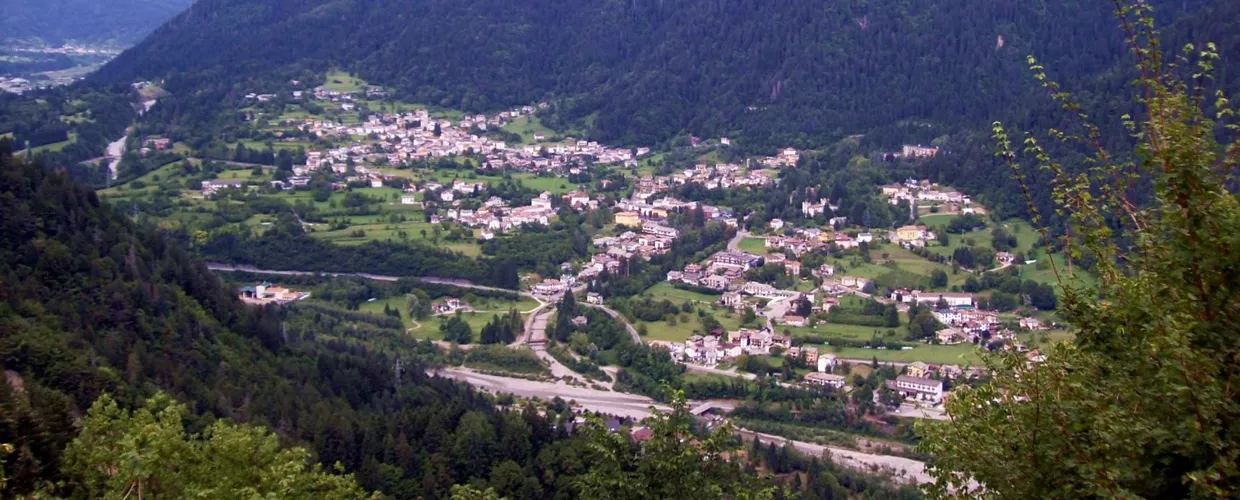
Overview
Arta Terme, the pearl of Carnia, combining wellness, alpine itineraries and archaic cults
A small Friulian town in the province of Udine, 442 metres above sea level, 10 kilometres from the Austrian border and 20 from the Slovenian border: there are many reasons to visit Arta Terme.
The town, nestled in the Valle del But that connects Tolmezzo to Austria via the Passo di Monte Croce Carnico pass, has been renowned for its waters since Roman times. The sulphurous water gushes from the Fonte Pudia spring, which has been providing cures and wellbeing for centuries, and has also made Arta a popular spa resort, the perfect place to rejuvenate the body and spirit, and the ideal starting point for walks and hikes among the malghe (shepherd's huts) and mountain huts.
The Arta Thermal Baths and its portentous waters, loved by Carducci
Enclosed in a green basin, the Arta Thermal Baths are located within a complex, the Water Palace, formed by two connected buildings.
The first, dating back to the 1960s and designed by architect Gino Valle, features an oriental-style roof; the second is more recently built. Its rooms invite you to relax among the saunas and Turkish baths or to recharge your batteries under the sensory showers and along the Kneipp path. Surrounding it is a beautiful park where you can enjoy mini-golf, tennis, or freshen up in the swimming pool with hydromassage.
A word of advice: don't be put off by the intense sulphurous odour of the waters flowing from Fonte Pudia, whose name originates from the Latin participle putens and alludes to its not particularly pleasant odour, because it is precisely because of the wealth of minerals in its waters that the Arta Thermal Baths are able to offer highly specialised treatment and rehabilitation courses for various ailments, especially those of the airways.
In fact, for centuries their medicinal properties have attracted tourists and patients to the Carnic locality: among the most famous personalities is Giosuè Carducci, who dedicated one of his poems, Il comune rustico (The Rustic Municipality), to Arta.
Excursions amid history and spectacular views
Piano d'Arta, a few kilometres from Arta Terme, is an excellent starting point for a series of walks that will allow you to better discover the area. If you enjoy trekking, the first destination you should tackle is without a doubt Mount Zoncolan, one of Friuli Venezia Giulia's best-known mountain settings, home to a well-known ski resort in winter and criss-crossed in summer by panoramic itineraries, amidst flower-filled pastures, woods and malghe (shepherd's huts).
You should not miss, in the vicinity of Arta Terme, the town of Zuglio, the ancient Iulium Carnicum, a flourishing economic and trade centre in Roman times, founded between 58 and 40 B.C., which became a colony in the 1st century A.D.. Close to its Archaeological Museum, you will be able to admire the remains of the Roman forum and artefacts found during archaeological excavations.
On the road back to Arta, also worth a visit for its architectural merit is the parish church of San Pietro near Zuglio, a Gothic church built on the site of an earlier Romanesque parish church, the windows of which still survive. Inside, the church preserves a wooden altar by Domenico da Tolmezzo, a masterpiece of Renaissance art, as well as a Baroque organ, and two canvases painted between the 16th and 18th centuries, portraying the conversion of St. Peter and the handing over of the keys to the Saint.
Discovering ancient Carnic traditions
It is precisely in this parish church that every year, to mark the feast of the Ascension, the so-called Kissing of the Crosses takes place. This is one of the most cherished sacred festivities, dating back to a very ancient cult, probably of mediaeval origin: following a series of paths through the woods, the faithful carry in procession to the parish church of San Pietro the precious astylar crosses, crucifixes for procession placed on a pole, which are stored throughout the year in the churches of the nearby valleys.
And if you pass through Arta Terme during the Christmas festivities, as well as visiting the Christmas market, you will be able to experience an ancient Carnic tradition that is celebrated every year, from 26 December until the Epiphany: that of the Stele di Nadal, a procession of believers led by the Three Wise Men who, singing songs and holding a wooden star decorated with coloured paper bows and a lamp in the centre, go from house to house to herald the birth of the Saviour.
And at the table, cjarsòns, a dish that is a symbol of Carnic tradition
You cannot leave without being enticed by the delights of Friuli's gastronomic tradition. In the local shops you can buy honey, plum and pear distillates, cheeses and, above all, the typical cjarsòns, one of Carnia's signature dishes: handmade agnolotti stuffed with officinal herbs and spices, usually topped with melted butter and smoked ricotta. There is a festival is dedicated to cjarsòns, which is held every year on the first Sunday in August in Arta Terme, in the locality of Val Rivalpo.